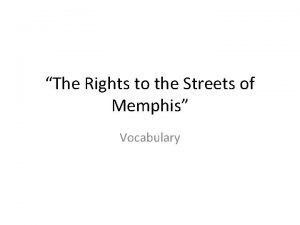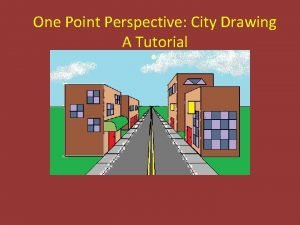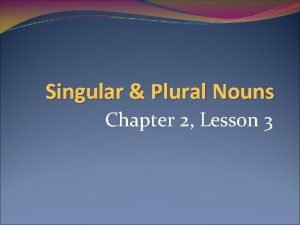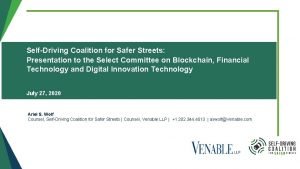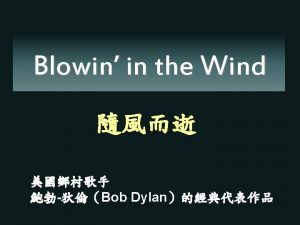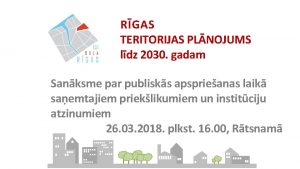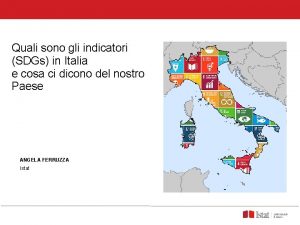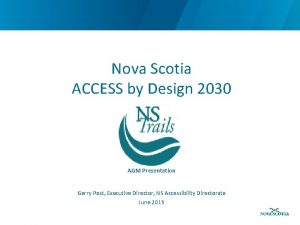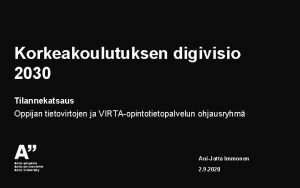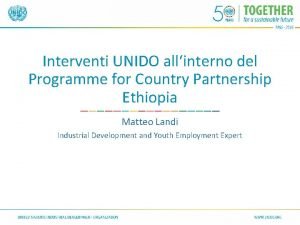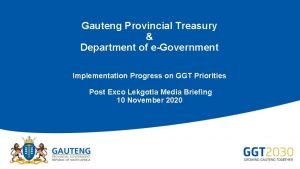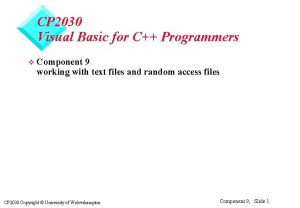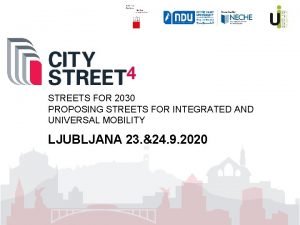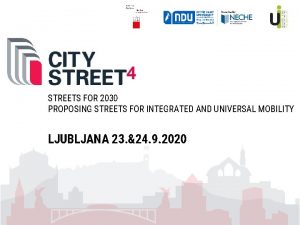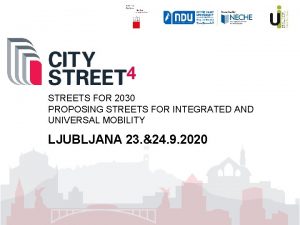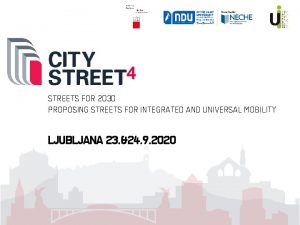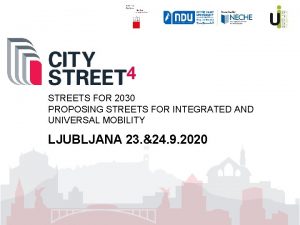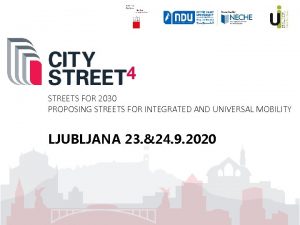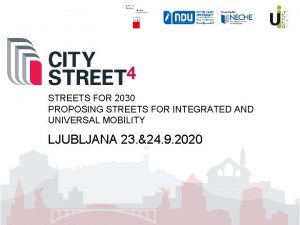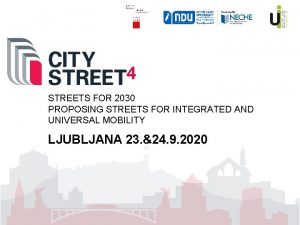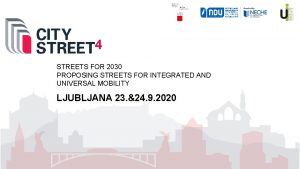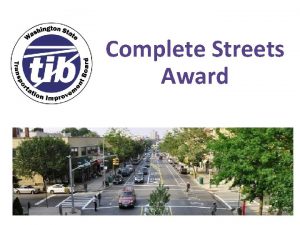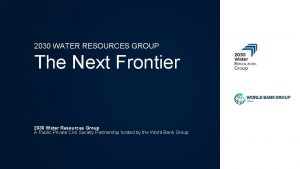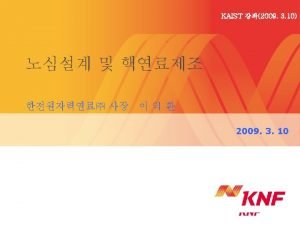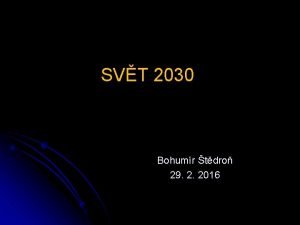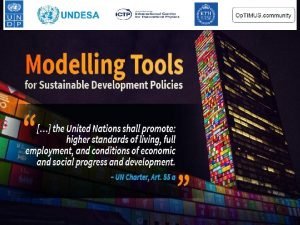STREETS FOR 2030 PROPOSING STREETS FOR INTEGRATED AND





















- Slides: 21

STREETS FOR 2030 PROPOSING STREETS FOR INTEGRATED AND UNIVERSAL MOBILITY LJUBLJANA 23. &24. 9. 2020

DINA N. BAROUD, NOTRE DAME UNIVERSITY, LOUAIZE LEBANON STRIATED AND SMOOTH IDENTITIES: MAPPING TRIPOLITICAL VARIENT INTENSITIES

General interest: The complexity which is inherent in the urban dynamics and reflected in the spatio-temporal reality of urban contexts Questions: How urban identities, including political ones, can be stated where these are the agglomeration of spatial experiences, memories, places, spaces as well as strategies and tactics? How these, and as they change across time and history, can be represented, mapped and read? source: google Fernand Deligny. L Lignes d’ettre

Propose: Narration can bring together all elements of such complexity.

Aim conceptualizing a diagrammatic mapping which might illustrate the “dynamic complexity” of narrations that tell stories about changes in political identities

hypothesis: a cyclic, precisely a spiralling cyclic form, can diagrammatically map the territories across the variant space and time aspects of urban political identities and narrations. The spiral, in this sense, can reflect the political narration’s space and time qualities such as fragmentation, continuity and rhythm source: google

Case study: Abdel Halim Karami square, Tripoli, Lebanon, inspecting the political activities between the square’s centre and surrounding spaces and constructions.

Methodology: Review literature (theoretical frame) Inspect urban intervention Map (using drawing tools) findings Propose possible analysis

Karami Square: political events: before 1976 after 1976 recent political protests source: google

October 17, 2019 protests

Theoretical propositions to read the changing political identity of the area (center periphery relation) 1. Michel de Certeau: narration’s circumstances are restructured in a new logic and identity—that of the fictional space—where time and space follow new inter-relationship of compactness and extension… “It recalls still more the mathematic theme of an identity correspondence between a circle and its centre. ”

Theoretical propositions to read the changing political identity of the area (center periphery relation) 2. Bruno Latour: `’[e]lements that appear remote if we follow the spiral may turn to be quite nearby if we compare loops. ” (Latour, 1993). Hence, the spiral constructs a physical existing entity: its looping line; and its open negative space: that which stretches between its loops. By this, the spiral is susceptible to map along its line what is determined and in its open space what is vibrant and indefinite.

Theoretical propositions to read the changing political identity of the area (center periphery relation) 3. Gilles Deleuze and Flèx Guattari (What to map): the striated space is a determined territory which is defined by metric lines that join points. The smooth space, on the other hand, is rather a territory that is constantly being defined by lines or vectors that are not metric but directional.

In such spaces, the circumstances and experiences of narration as follows: striated space—the spiral’s looping line—can represent the narrations realistic context; the smooth space—the spiral’s open negative space in between the loops—can represent the unending experiences and de-territorization/reshaping of the story; precisely evidences (interventions during political activities).

Mapping attempts: Investigating tents

Mapping attempts:

Mapping attempts:

Conclusion - diagram could indicate political intensities and their flow. By analysing and comparing the spatial distribution of tents across the loops, what could be defined are indicators that can characterize the political fields of intensities at the place. - -these indicators and characteristics can be subjected to rhythmanalysis, or the question of continuity and discontinuity between the striated elements in the diagram and the smooth distribution (of tents) in-between the spiral loops: The historic projection across the loops, (to map the political changing rate) the tension and proximity between the striated and the smooth experiences and distribution of events and imagination (to map the intensity of struggle an protest between demonstrators and authority), the changing pattern and flow between both spaces and across time (to map persistence and strategies of the political activities), and, finally, the scale of presence of the interventions/tents (to map tactics of interventions and imagination, provision and prospects of the activists).

task: to develop a more elaborate spiral diagram which can encompass diverse and more complex layers and levels of the spatial and temporal political situations and, materialistically, to develop what could be the evidences for spatial inter-relation between the striated and the smooth space.

References Stockmans, J. and K. Buscher (2017). A spatial reading of urban political-religious conflict: contested urban landscapes in Addis Ababa, Ethiopia. J. of Modern African Studies, 55(1), 79 -104. Tianchen Dai, T. Zhuang, J. Yan and T. Zhang (2018). From Landscape to Mindscape: Spatial Narration of Touristic Amsterdam. Sustainability, 10 (2623). Verraest, S. and B. Keunen (2012). Introduction to New Work on Landscape and Its Narration. CLCWeb: Comparative Literature and Culture, 14 (3). Fişek, E. (2018). Palimpsests of Violence: Urban Dispossession and Political Theatre in Istanbul. Comparative Drama, 52 (3), 349 -371. Chirobocea, O. (2017). Perspectives on the Relation between History and Fiction. Philologica Jassyensia, 2 (26), 191– 202. George Rossolatos, G. (2018). Post-place branding as nomadic experiencing Place Brand Public. Dipl, 14, 285– 304. Gadinger, F. , Ochoa, C. S. and Yildiz, T. (2019). Resistance or Thuggery? Political Narratives of Urban Riots. NARRATIVE CULTURE, 6 (1), 88– 111. Deleuze, G. and F. Gauttari (1987). A Thousand Plateaus: Capitalism and Schizophrenia. Continuum. (de) Certeau, M. (1984). The practice of everyday Life. University of California Press. Latour, B. (1993). We have never been modern. Harvard University Press. Brighenti, A. M. and Kärrholm, M. (2018). Beyond rhythmanalysis: towards a territoriology of rhythms and melodies in everyday spatial activities. City Territ Archit, 5(4). Morton, T. (2013). Hyperobjects: Philosophy and Ecology after the End of the World. University of Minneapolis Pre

Thank you
 Wjec hospitality and catering unit 2 examples
Wjec hospitality and catering unit 2 examples The rights to the streets of memphis
The rights to the streets of memphis City street perspective
City street perspective Plural form of toy
Plural form of toy What point is juliet making when she speaks these lines
What point is juliet making when she speaks these lines Green streets
Green streets I have seen them riding seaward on the waves analysis
I have seen them riding seaward on the waves analysis Sweet streets desserts
Sweet streets desserts Self-driving coalition for safer streets
Self-driving coalition for safer streets Sweet streets desserts
Sweet streets desserts How many roads man must walk down
How many roads man must walk down Smarter 2030
Smarter 2030 Ol 2030
Ol 2030 Shaping 2030
Shaping 2030 Rīgas teritorijas plānojums 2030
Rīgas teritorijas plānojums 2030 Hrdsa
Hrdsa Agenda 2030
Agenda 2030 Access by design 2030
Access by design 2030 Digivisio 2030
Digivisio 2030 Agenda 2030
Agenda 2030 Ggt 2030 application form
Ggt 2030 application form Cp 2030
Cp 2030

